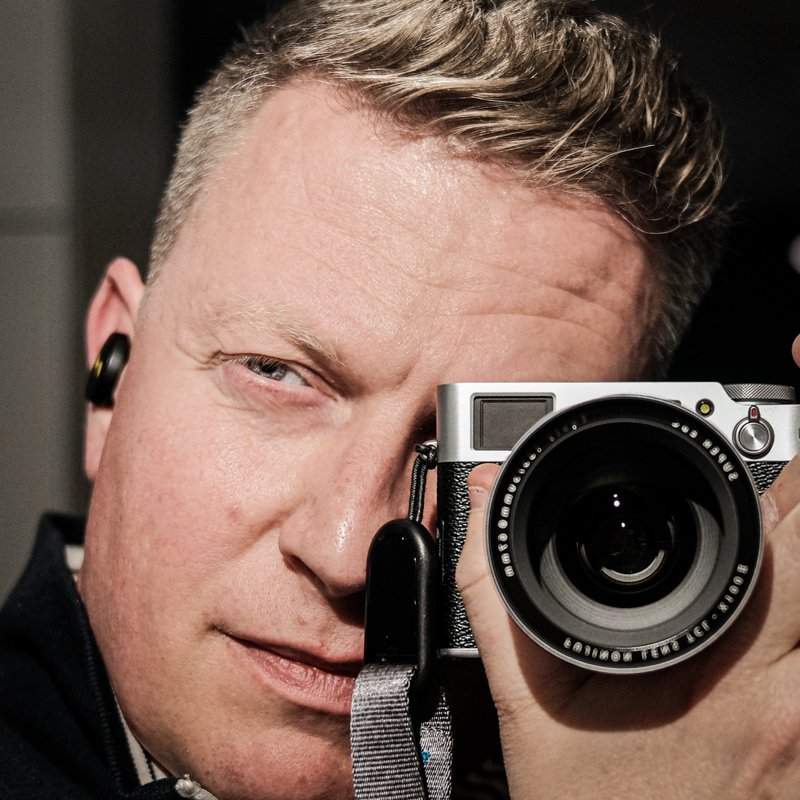Sascha Schroeder
Korhoenstraat 24
4332DN Middelburg, NL
The fascination of photography
It freezes a split-second, allowing it to continue existing in the exact same state. Photography has the power to transform a moment of the past into the present, which is something that only this type of medium can achieve.
But there is more to it.
When we compare a painting and a photograph, we find similarities. Though painting and photography require different skillsets, our minds inevitably search for patterns, shapes, contrasts, and oddities in both mediums. Pictures that appeal to us often exhibit explicit characteristics like a specific number of objects or subjects, a unique combination of colours, a geometrical structure, or a contrast of some kind. There may be leading lines that guide the observer's eye to the focal point, or the position of people or objects that create abstract shapes. A good photograph, as with a good painting, resonates with us because there is something in the composition that satisfies our innate pursuit of structure. Some compositions, while still able to tell a story or convey meaning, do not adhere to the classical composition principles in an apparent way, but in most cases, you can identify some of these principles being followed.
Capturing light as a form of art
We can analyze a picture based on several composition guidelines and rules, and it will not lose its appeal. Like a good poem, understanding what makes it so good does not diminish its beauty. Music is highly mathematical, but comprehending a complex piece of music and the mathematics that explain which chords, tunes, and sequence of harmonies sound good to our ears does not minimize the impact that it has on us. With photography, it's the same. A photograph can be documentation, or entertainment, or art - or all three at the same time.
The main difference between photographic art and other forms of visual art is that the photographer does not create the scene, but they need to find it, which can be similarly difficult.
Post-processing
It is not the editing that turns a mediocre photograph into a good one. The most famous pictures taken by masters of photography have not been post-processed at all. A well composed picture does not need much editing, and a poorly composed picture cannot be rescued by state-of-the-art post-processing.
The majority of the pictures posted on this website have been carefully but very mildly edited, and there are two reasons for this:
What matters when you press the shutter button is the composition. This is the hardest part, but also the most interesting one.
There is a fine line where editing a picture is bleeding into manipulating its content, and that is just not my cup of tea. I like my pictures to be credible.
The gear
A good photographer will take good pictures with any camera. A well composed picture taken with a low quality lens or that is not 100 percent in focus might not be perfect, but it will be better than a badly composed picture taken with a top-notch prime lens, and it will be better than any picture that was never taken at all.
For me, gear is a tool, not a gadget. There are tools that work well for my style and technique, while others do not. I prefer working with a compact and lightweight tool that has important controls easily accessible. My current setup includes an inconspicuous camera that appears to have been designed in the 1970s, with a fixed 35mm lens attached. It's practical in three ways. Firstly, it helps with street photography since I look like a harmless tourist taking snapshots. I don’t appear to be invading people’s space. Secondly, the design of this camera allows me to set the aperture, shutter speed, and sensitivity as a natural part of the process, which slows me down and makes me think. Finally, the limitation to a limited number of focal lengths keeps me moving before taking the shot.
Photography is a life-long journey. Every time you try something out, you will learn something new.
Who am I?
I have always been fascinated by creative processes, and cameras. My father had a Voigländer film camera from the early 1960ies with a 35mm lens - which is primitive compared to the systems of today. But the pictures that were taken with this camera are magic documents that conserve a different time and space.
In my teenage years I got my first own cameras and I experimented with developing black and white photos in a darkroom.
The job that pays my bills today is highly rational and result-oriented. Photography is an antithesis to that, and offers a way for me to excape into an activity that requires a hightened level of awareness but does not always yield a result. My street shots do not depict glamourous or exciting moments, but maybe one or the other will appeal to you nonetheless - it’s that certain magic that I am looking for.

